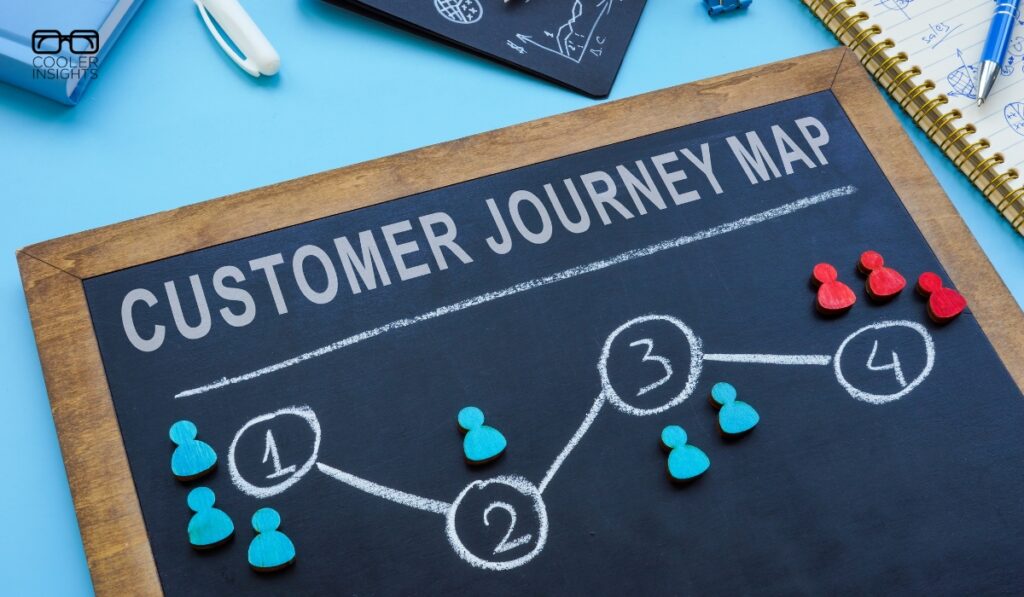
Businesses that engage customers are more likely to convert browsers into buyers. Customer journey mapping is the first step to identifying bottlenecks that might negatively impact the user experience (UX).
Fortunately, there are many ways to tap into the power of technological automation and improve UX through tweaking the buyer’s journey. One of the most powerful ways to do so is through marketing automation.
In this article, you will learn how marketing automation can help you to optimise the mapping of your customer journeys, and why you should implement it in your business.
Defining Marketing Automation
Machines can handle repetitive marketing tasks to free up a marketing professionals’ time to create interesting campaigns and build up a product’s brand image. This can be done by tapping into available software which automates both social media posts and email campaigns. You can also use customer relationship management (CRM) software to engage users and keep them loyal to your business.
Statista surveyed 387 marketing professionals about the ways they use automation. Around 58% of respondents utilize it for automation and another 49% for social media management.
How to Use Automation in Journey Mapping
Your customer journey map looks at every step users take as they interact with your brand. Automation factors in how to achieve your desired results with less effort. Here’s how to implement processes requiring little human input that provide maximum return.
1. Create Consistent Messaging
People may have never heard of your brand before their first encounter. They have no reason to trust you will stand behind your product or service. Consistent messaging across multiple channels is one way to ensure you appear trustworthy to potential customers.
Automation reduces human error and gives you time to check for inconsistencies in messaging. Computers receive predefined rules to prevent mistakes.
One example is Target. You’ll find similar messaging when visiting the brand’s website or social media pages. Many posts are automated and monitored for effectiveness, so the company can repeat successful ones.
2. Use AI to Retain Customers
Implementing artificial intelligence (AI) into customer journey mapping can improve retention. AI can predict behavior by studying past data. It can pinpoint the time frame someone is likely to bounce to a competitor and implement processes to prevent losing them by customizing offers or reaching out with a personal message.
Several case studies prove AI’s effectiveness in retaining clientele across industries. Consider, for example, the ecommerce space. Sites like Amazon use AI tools such as chatbots to help customers browse, summarize reviews and get shopping recommendations. Bots can check delivery time, track orders and even provide ideas for related items.
Even industries such as education have successfully used AI as a retention measure. For example, one university used AI analysis to change how it reached out to students at risk of dropping out. The school improved retention by 3% after implementing the new procedures.
3. Lead Users Down a Path
Marketing automation should be combined with past customer behaviors to implement different strategies for each stage of the buyer’s journey. Whether someone is in the decision-making stage or just starting to collect data, the emails and messages must be relevant to where they are.
Automating email drip campaigns for those showing interest in your products is an excellent first step to driving people to the next stage of the sales funnel and taking them deeper than they’d otherwise journey. Use data to retarget those who dropped out but might jump back in with the right encouragement.
4. Improve User Flow
In addition to pulling people back in, UX designers must look at each step when mapping the customer journey and find ways to guide them toward conversion. Around 73% of consumers say user experience greatly impacts whether or not they buy. Anything you can do to tweak the flow and make things run more smoothly improves conversions.
Run an analysis on the back end of your website to find bottlenecks. What could cause people to leave if they make it to the second stage of your sales funnel and then bounce away? Check the wording on the call to action (CTA). Try different versions and automate A/B testing to see what performs best with your audience.
5. Maximize Engagement
Once you convert site visitors to potential customers, use marketing automation for lead scoring to see which contacts are most likely to buy. You can also determine what offers work best for certain audience segments. Understanding the behaviors driving different buyer personas helps you customize communication for better engagement.
You can also use automation to improve communications between marketing and sales, making for a better overall experience for staff and customers.
Why Should You Combine Marketing Automation With Journey Mapping?
Marketing automation helps you better understand your users and personalize offers to best meet their needs. You’ll attract your target audience, convert them into customers and retain them for years.
Combining marketing automation with journey mapping takes your strategy to the next level by aligning automated processes with the specific touchpoints that define your customers’ experiences. This powerful duo enables you to not only anticipate and respond to customer needs in real-time but also to craft a seamless, personalised journey that resonates with each individual.
By integrating these tools, you create a cohesive and adaptive marketing approach that not only drives conversions but also fosters lasting loyalty, ensuring that your brand remains relevant and valued in an ever-evolving marketplace.

Eleanor Hecks is a design and marketing writer and researcher with a particular passion for CX topics. You can find her work as Editor in Chief of Designerly Magazine and as a writer for publications such as Clutch.co, Fast Company and Webdesigner Depot. Connect with her on LinkedIn or X to view her latest work.
